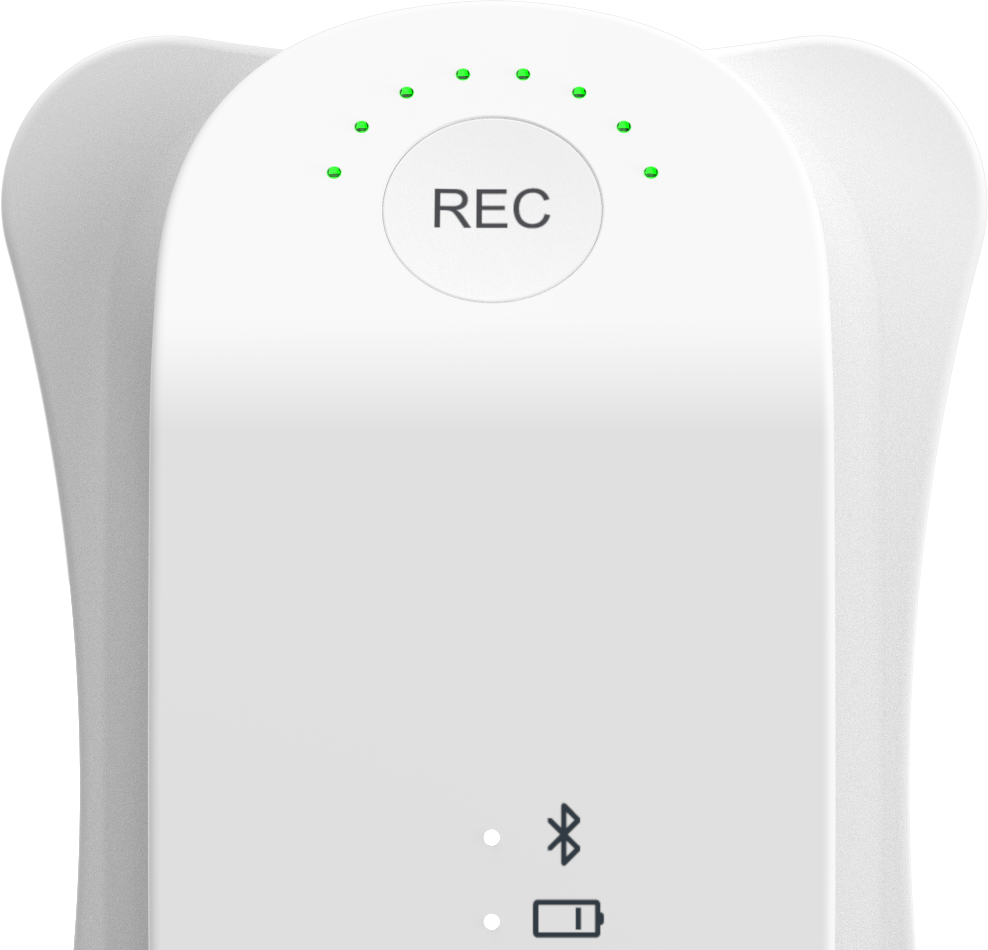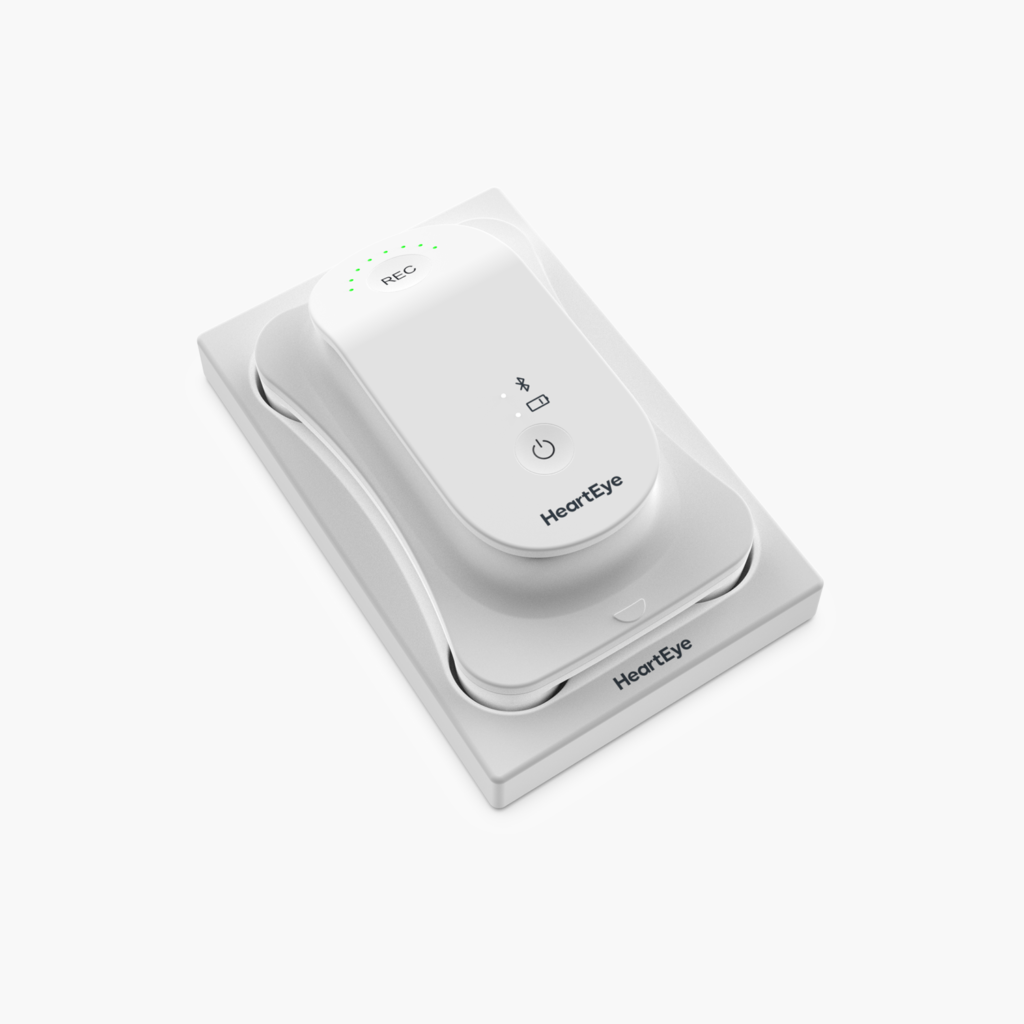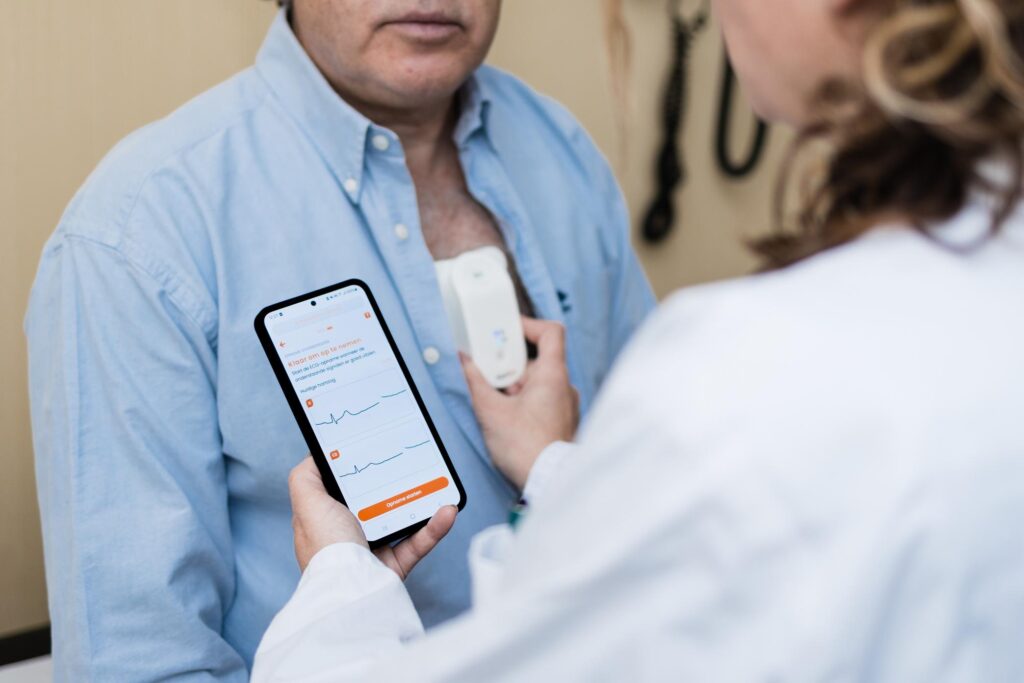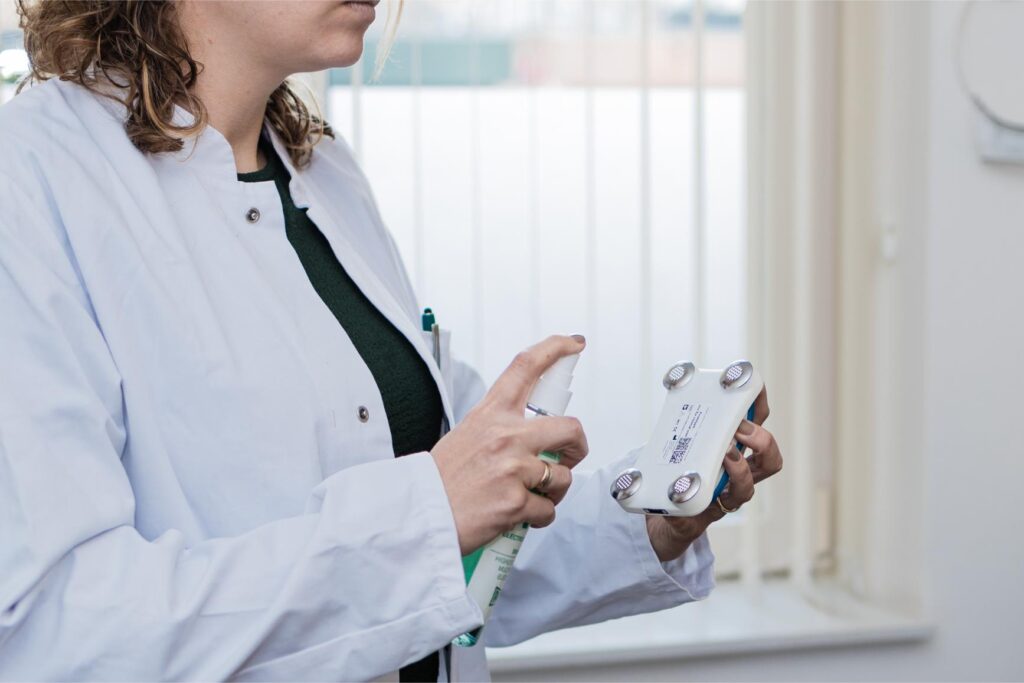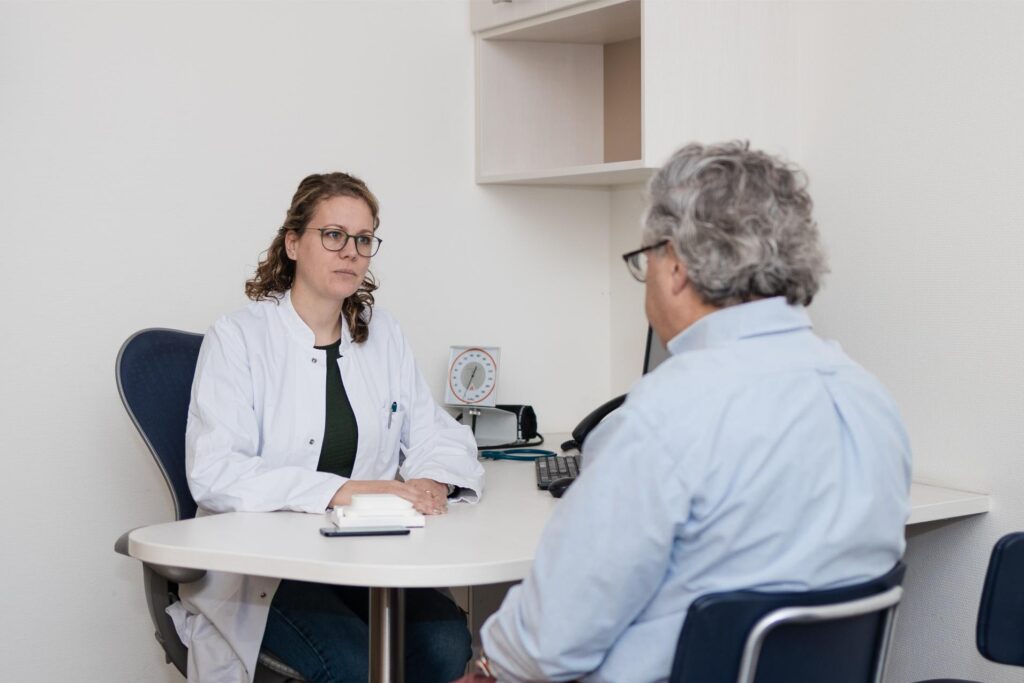Clinical grade
Hearteye’s ECG provides hospital-level, 12-lead cardiac diagnostic power in a compact form factor.
Patented technology
Hearteye’s ECG is the world’s first of its kind. Never before has there been a mobile device with this technology. See our two patents here.
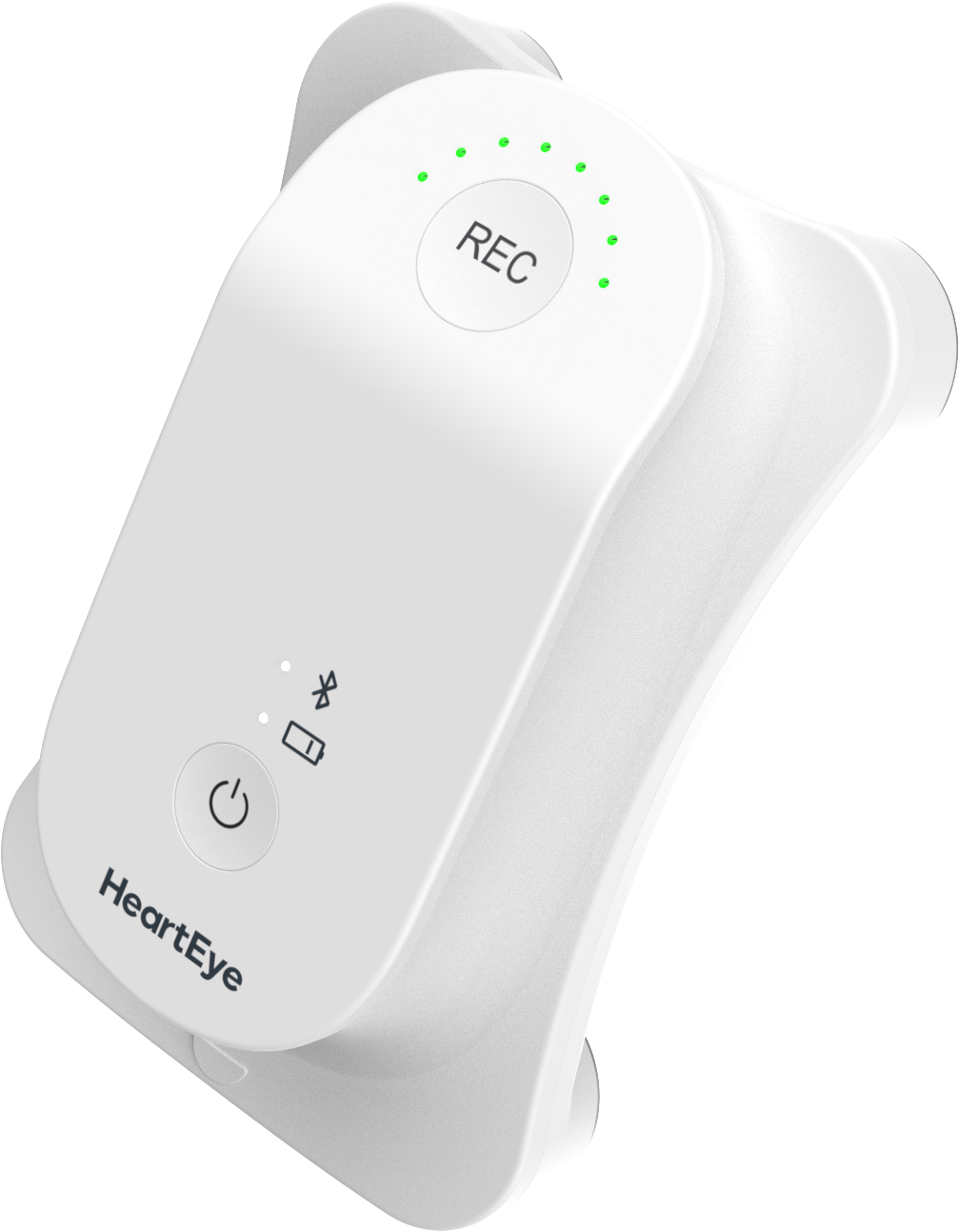
Wireless
Take an ECG without wires, connect to the HeartEye app and collect all results in our portal. From our portal, all results can be shared with other cardiac health professionals.
AI powered
Analyze the results with our AI technology, improving diagnostic accuracy and speed. Let our AI assist you in your work.
How we compare
What makes us unique
Swipe to compare
Features
Scan output
Scan time
Clinical standard
Easy to operate
AI Analysis
EPR integration
What we bring
A range of benefits
Portable device
No wires and fits in your pocket
Fast
Just 30 seconds for a full 12-Lead ECG
Easy to use
Can be used by anyone without instruction
Lower workload
No wires and fits in your pocket
Reduced costs
Just 30 seconds for a full 12-Lead ECG
Better prevention
Easier, cheaper and faster use leads to better prevention
How it works
From device to app & dashboard
1. Download & install the app
After the download has been completed and installed, you can create an account.
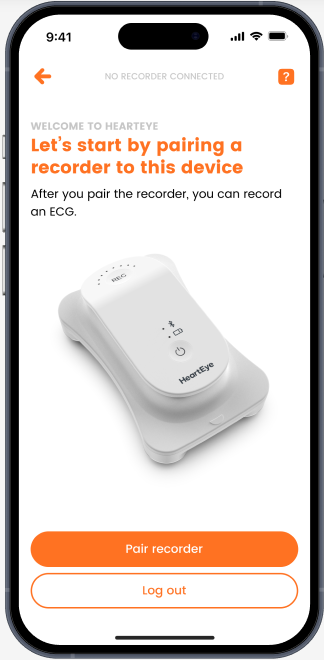
2. Scan QR code on Hearteye’s ECG
Connect the HeartEye device through Bluethooth with the HeartEye app on your phone. We are now ready to scan.
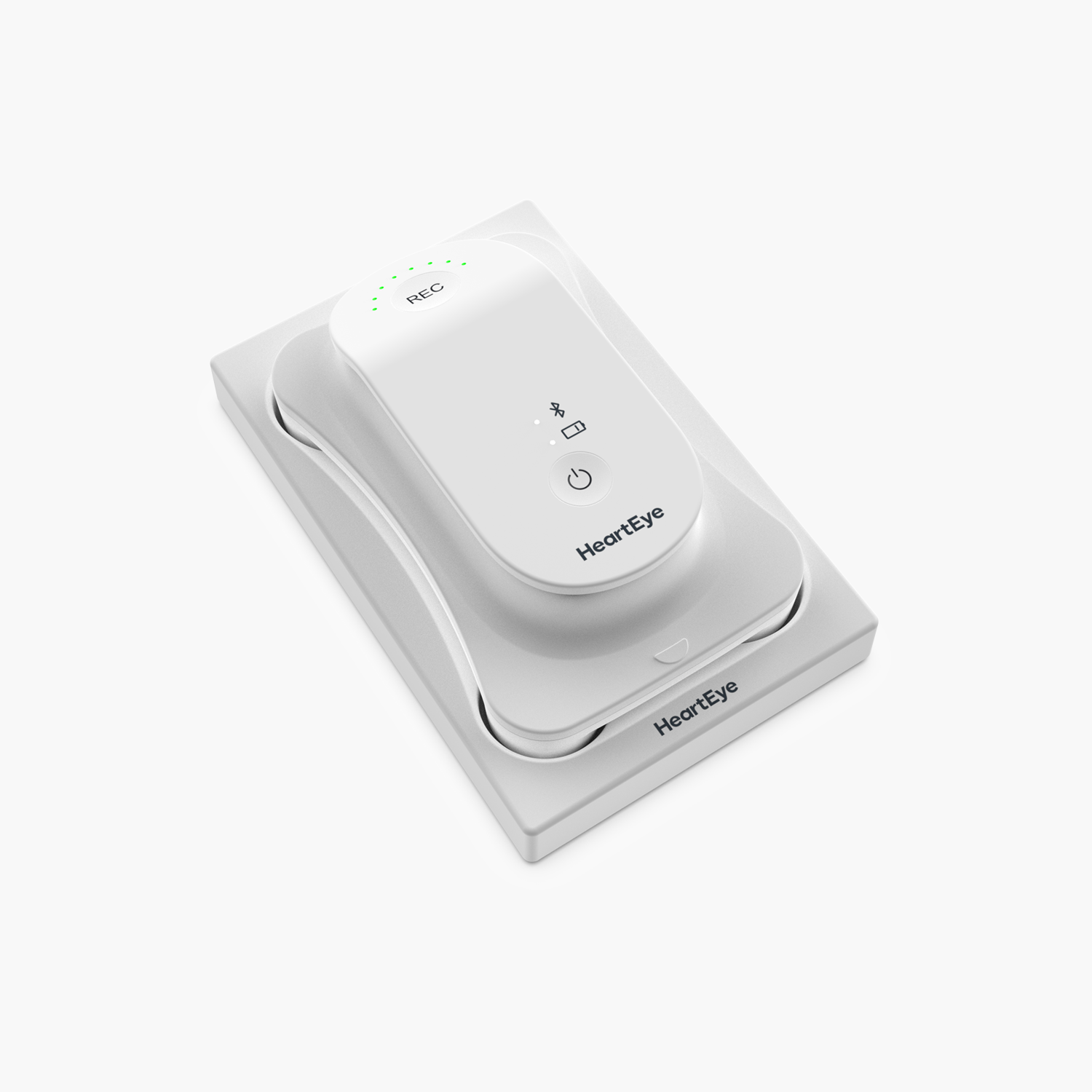
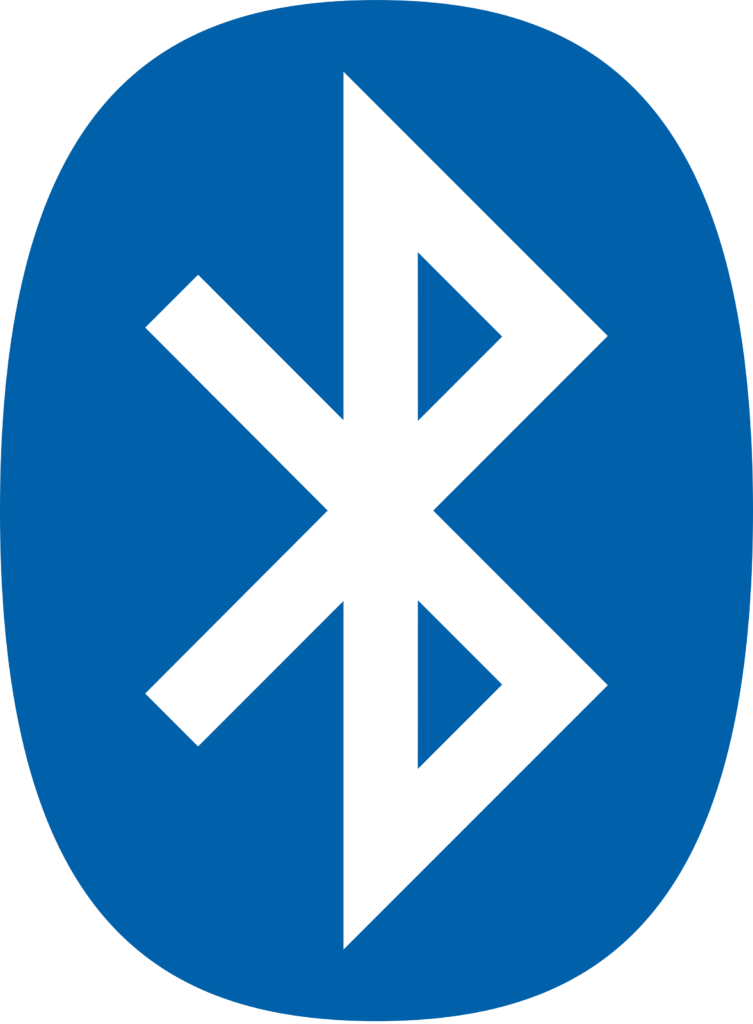

3. Follow instructions & put the recorder on the chest of patient
During the scan, see instructions and progress in the HeartEye app. When the scan is done, immediately see the results in the app as well.
4. Directly save all results to the desktop dashboard
After gathering results, all results are saved in the HeartEye desktop dashboard. Here, you can view all results, share them with other health professionals and grant dashboard access to others.

Backed by patents and research
01
Patent received with patent nr. 2021115
02
Automatic Triage of 12-Lead ECGs Using Deep Convolutional Neural Networks. Journal of the American Heart Association, 9(10), e015138. https://doi.org/10.1161/JAHA.119.015138
03
Uncertainty estimation for deep learning-based automated analysis of 12-lead electrocardiograms. European Heart Journal – Digital Health, 1–41. https://doi.org/10.1093/ehjdh/ztab045
04
Discovering and Visualizing Disease-Specific Electrocardiogram Features Using Deep Learning: Proof-of-Concept in Phospholamban Gene Mutation Carriers. Circulation: Arrhythmia and Electrophysiology. https://doi.org/10.1161/CIRCEP.120.009056
“If my cardiologist can use the HeartEye
ECG for his analysis and treatment plan, I will be treated faster and more efficiently.”

Bart-Jan W.
Heart Patient | Interim & Program Manager, Agri- & Horticulture
Interested?
Get in touch
Any remaining questions? Feel free to reach out to us.
Frequently Asked Questions
Usage of the device
With our device we can generate a full 12-lead ECG within 30 seconds.
The device needs to connect with Bluetooth to the HeartEye app. After scanning the ECG you can upload the scan to the portal where it can be shared with health care professionals.
This device was developed for healthcare professionals. Since it is pocket-sized and easy to operate, it can be employed in the doctor’s office, while doing rounds in the hospital, during house calls, etc. In the future it will be available for patient self-use as well.
ECGs are stored in a platform environment after the ECG recording to save the registration. Healthcare professionals can log in to this platform and view or comment on the ECG. It is possible to make an API integration with Electronic Patient Records.
Patients may be given this device to operate after a short instruction. The patient can upload registered ECGs to a platform for interpretation by a professional.
The battery can be used for recording 250 ECG measurements during 24 hours without the need for recharging the battery. The recorder can be in sleep/OFF mode for 2 weeks without the need to recharge the battery.
Sensitivity and specificity were tested in published clinical trials for coronary artery disease, conduction delay, and abnormal QRS voltages, ranging from 65-85%. The overall negative predictive value was >95%.
Launch
We expect to launch the device in Q1 2026. Feel free to reach out to use for remaining question or the latest updates.
Please reach out to us through joining the waitlist below.
This device produces a 12-lead ECG suitable for diagnosing heart disease comparable to the traditionally recorded ECGs.
Currently, the procedures for registration have been initiated and are expected to be completed in Q1 of 2026.


